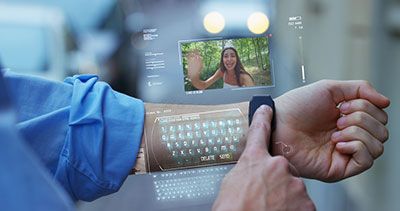
The Future of Wearable Computer Technology
Introduction
Wearable computer technology has seen remarkable advancements in recent years, paving the way for an exciting future. From smartwatches and fitness trackers to augmented reality glasses and smart clothing, these innovative devices have become increasingly prevalent in our everyday lives. This article explores the current state of wearable computer technology and provides a glimpse into its potential future.
The Evolving Landscape
Over the years, wearable devices have evolved to offer more than just basic functionalities. They now encompass a wide range of capabilities, including health monitoring, activity tracking, communication, and entertainment. With miniaturization, improved battery life, and enhanced processing power, wearables have become more powerful and compact, seamlessly integrating into our lives.
Augmented Reality and Virtual Reality
One of the most exciting developments in wearable technology is the emergence of augmented reality (AR) and virtual reality (VR) devices. AR glasses, such as Google Glass and Microsoft HoloLens, overlay digital information onto the real world, offering a wide array of applications in industries like healthcare, gaming, and education. On the other hand, VR headsets transport users into immersive virtual environments, revolutionizing industries like entertainment, training, and architecture.
Healthcare Revolution
Wearable technology has significant implications in the healthcare sector. From monitoring vital signs and tracking activity levels to detecting potential diseases, these devices offer personalized health insights and continuous care. As wearable sensors and algorithms improve, wearables have the potential to revolutionize patient monitoring, preventive care, and chronic disease management. They can also facilitate remote patient monitoring, reducing healthcare costs and improving accessibility to medical expertise.
Smart Clothing
Smart clothing, another exciting frontier in wearable technology, integrates sensors, conductive fabrics, and embedded technology into garments. These smart textiles can monitor various physiological parameters, track movement, and even generate energy. From athletic performance optimization to monitoring stress levels, smart clothing has the potential to reshape industries like sports, fashion, and healthcare.
Data and Privacy Concerns
As wearable technology gains popularity, concerns over data privacy and security also arise. These devices collect vast amounts of personal data, ranging from location information to biometric measurements. It is crucial for technology companies to prioritize robust security measures and transparent data handling practices to ensure user privacy and maintain trust.
The Future Potential
Looking ahead, the future of wearable computer technology holds immense potential. As the integration of artificial intelligence (AI) and machine learning (ML) continues to advance, wearables will become even smarter and more intuitive. They will seamlessly adapt to our individual needs, delivering personalized experiences and insights. Moreover, advancements in flexible displays, energy harvesting, and battery technologies will allow for more aesthetically pleasing and energy-efficient wearables.
Conclusion
Wearable computer technology is set to redefine our daily lives, offering unparalleled convenience, connectivity, and personalization. From the revolutionary potential of AR and VR to the transformative impact on healthcare and smart clothing, these devices will continue to shape numerous industries and improve the way we interact with technology. The future is bright for wearables, and we can expect remarkable innovations that will further enhance our digital experiences.


